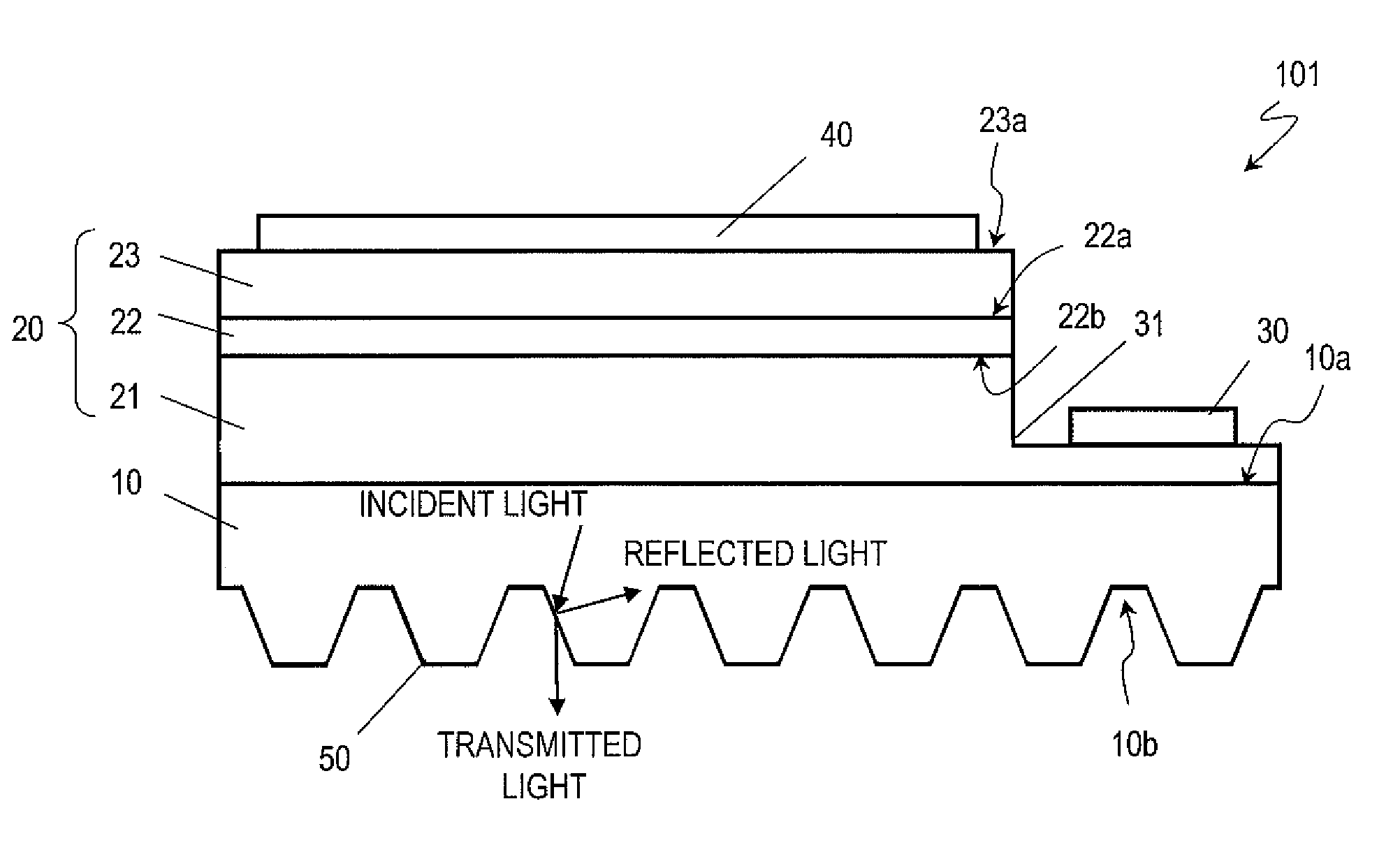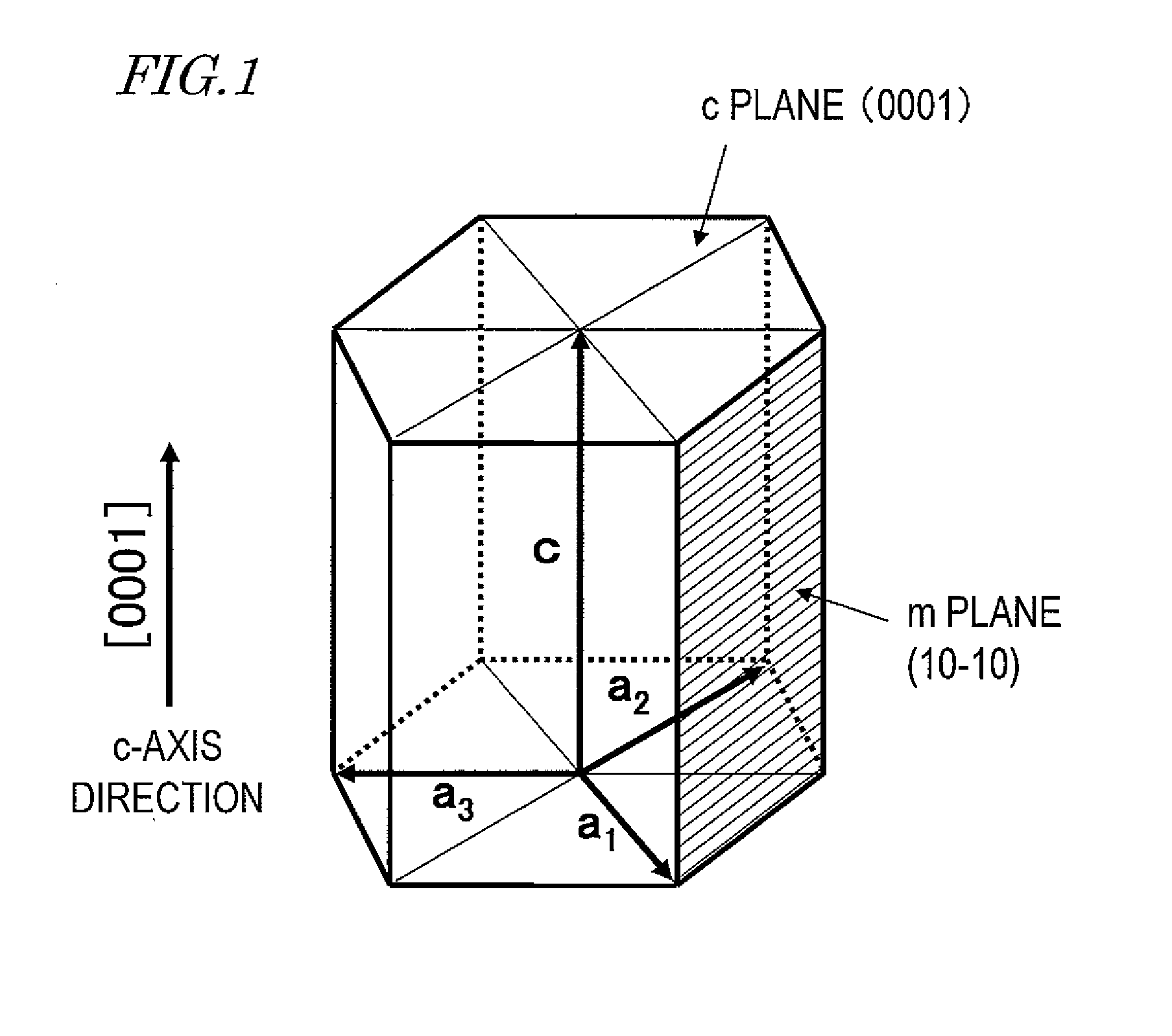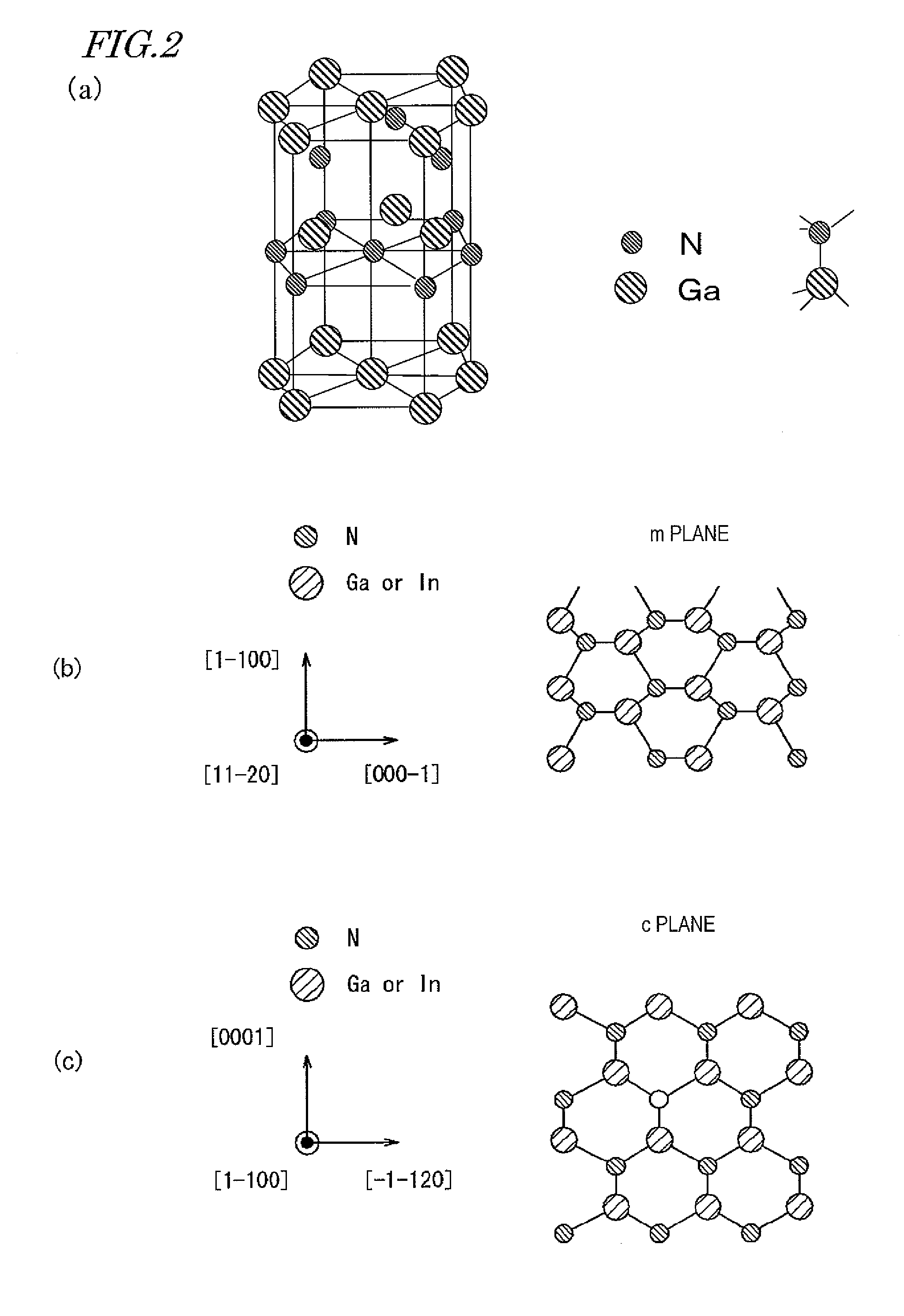Semiconductor light-emitting element
- Summary
- Abstract
- Description
- Claims
- Application Information
AI Technical Summary
Benefits of technology
Problems solved by technology
Method used
Image
Examples
Example
Making Example 1, Reference Example 1 and Comparative Example 1
[0167]First of all, as shown in FIG. 3, a semiconductor multilayer structure 20 was grown epitaxially on a substrate 10 by MOCVD (metalorganic chemical vapor deposition) process. Specifically, an n-type nitride semiconductor layer 21 was grown epitaxially on an n-type GaN substrate, of which the principal surface was an m plane. For example, using silicon as an n-type dopant and supplying TMG (Ga(CH3)3) and NH3 as source gases to a reaction chamber, an n-type nitride semiconductor layer 21 of GaN was deposited to a thickness of 3 μm at a growing temperature of approximately 1050 degrees Celsius.
[0168]Next, an active layer region 22 was formed on the n-type nitride semiconductor layer 21. The active layer region 22 had a GaInN / GaN multiple quantum well (MQW) structure in which Ga1-xInxN well layers (where x=0.19), each having a thickness of 9 nm, and GaN barrier layers, each having a thickness of 9 nm, were stacked altern...
Example
Making Example 2, Reference Example 2 and Comparative Example 2
[0176]A portion functioning as a semiconductor light-emitting element was made in the same procedure as in Example 1, Reference Example 1 and Comparative Example 1. After that, a striped structure was made in a different procedure from in Example 1, Reference Example 1 and Comparative Example 1. Specifically, an SiO2 film was deposited as a hard mask material on the second principal surface 10b of the substrate 10. The SiO2 film was deposited by plasma chemical vapor deposition process. Next, a photoresist was applied onto the hard mask and was patterned using a contact exposure system. Thereafter, using the photoresist as a mask, the hard mask was dry-etched with CF4 gas and O2 gas. Next, using the hard mask as a mask, the second principal surface 10b of the substrate 10 was dry-etched using a chlorine based gas. Finally, the hard mask was removed by dry etching. In this manner, a semiconductor light-emitting element wa...
Example
Making Example 3, Reference Example 3 and Comparative Example 3
[0178]Semiconductor light-emitting elements, of which the striped structure defined angles β of 0, 5, 30, 45 and 90 degrees, respectively, with respect to the a-axis, were fabricated. First of all, a portion functioning as a semiconductor light-emitting element was made in the same procedure as in Example 1, Reference Example 1 and Comparative Example 1. After that, a striped structure was made in a different procedure from in Example 1, Reference Example 1 and Comparative Example 1. Specifically, a photoresist was applied onto the second principal surface 10b of the substrate 10 and was patterned using a contact exposure system and then heated to 230 degrees Celsius. Thereafter, using the photoresist as a mask, the second principal surface 10b of the substrate 10 was dry-etched using a chlorine based gas. In this process step, the photoresist was also removed at the same time as a result of the dry etching process. In t...
PUM
 Login to View More
Login to View More Abstract
Description
Claims
Application Information
 Login to View More
Login to View More - R&D
- Intellectual Property
- Life Sciences
- Materials
- Tech Scout
- Unparalleled Data Quality
- Higher Quality Content
- 60% Fewer Hallucinations
Browse by: Latest US Patents, China's latest patents, Technical Efficacy Thesaurus, Application Domain, Technology Topic, Popular Technical Reports.
© 2025 PatSnap. All rights reserved.Legal|Privacy policy|Modern Slavery Act Transparency Statement|Sitemap|About US| Contact US: help@patsnap.com



